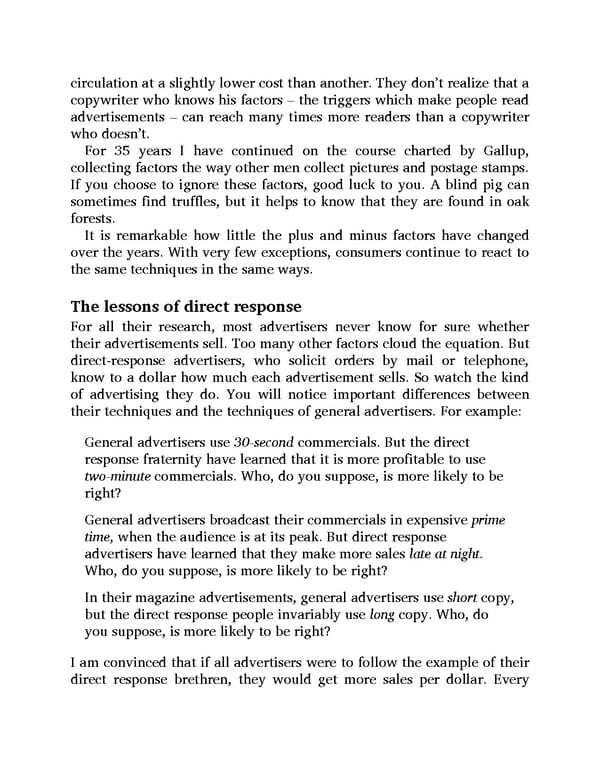circulation at a slightly lower cost than another. They don’t realize that a copywriter who knows his factors – the triggers which make people read advertisements – can reach many times more readers than a copywriter who doesn’t. For 35 years I have continued on the course charted by Gallup, collecting factors the way other men collect pictures and postage stamps. If you choose to ignore these factors, good luck to you. A blind pig can sometimes find truffles, but it helps to know that they are found in oak forests. It is remarkable how little the plus and minus factors have changed over the years. With very few exceptions, consumers continue to react to the same techniques in the same ways. The lessons of direct response For all their research, most advertisers never know for sure whether their advertisements sell. Too many other factors cloud the equation. But direct-response advertisers, who solicit orders by mail or telephone, know to a dollar how much each advertisement sells. So watch the kind of advertising they do. You will notice important differences between their techniques and the techniques of general advertisers. For example: General advertisers use 30-second commercials. But the direct response fraternity have learned that it is more profitable to use two-minute commercials. Who, do you suppose, is more likely to be right? General advertisers broadcast their commercials in expensive prime time, when the audience is at its peak. But direct response advertisers have learned that they make more sales late at night. Who, do you suppose, is more likely to be right? In their magazine advertisements, general advertisers use short copy, but the direct response people invariably use long copy. Who, do you suppose, is more likely to be right? I am convinced that if all advertisers were to follow the example of their direct response brethren, they would get more sales per dollar. Every
 Ogilvy on Advertising Page 30 Page 32
Ogilvy on Advertising Page 30 Page 32